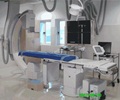Those currently in prison and those who have been released are more susceptible to heart disease but more research needs to be done to spot the risk factors.

‘Various risk factors such as the trauma of imprisonment, social habits after the release and financial constraints increase the risk of heart disease.’





"In many ways this population has been invisible to public health and the healthcare system, despite its many needs," said Ana Diez Roux, MD, PhD, dean of Drexel University's Dornsife School of Public Health. Diez Roux chaired an NHLBI panel on incarceration and cardiovascular disease that formed the basis for a set of recommendations recently published in the Journal of the American College of Cardiology.
The report -- whose lead author was Emily Wang, MD, of Yale University's School of Medicine -- identified gaps in knowledge we have about cardiovascular disease and the 13 million Americans who make up our incarcerated and released population. It also highlighted areas where further studies could better shine a light on factors and potential disease prevention strategies.
"The normalcy of incarceration in this country in certain communities, and the disproportionate incarceration of individuals of certain racial and ethnic backgrounds, makes understanding the health risks of incarceration critical to improving health disparities" Wang said.
Risk Factors For Heart Disease Among Incarcerated Population
Advertisement
"Many individuals who are incarcerated are disadvantaged in many ways before they go to prison," Diez Roux said. "This adversely affects their health in many ways. And the prison environment itself can have major health impacts."
Advertisement
"When patients are incarcerated, the medical system of care is often very passive," Wang said. "For instance, patients often have to make a line in the morning to receive their medications, where a nurse hands them their pills, checks to see if they have swallowed it, and then they return for the same thing in the evening."
The need to take action to acquire care or treatment, along with any personal choices that could be made about that care, are extremely limited in prison.
"So when these prisoners are released, many find it difficult to manage their high blood pressure or diabetes, since they didn't have to do much of anything when incarcerated," Wang said. "We may need to address self-efficacy and bolster self-management skills when an individual is incarcerated to improve health outcomes when they are released."
Actual incarceration, itself, is a stressor that may lead to coping behaviors like smoking or prompt conditions such as depression. Getting a better look at the relationship between stress and incarcerated people is fertile ground for a study, the team determined in their review.
Substance use, such as alcohol, cocaine and methamphetamine, is typically higher in incarcerated and released populations, as are HIV and Hepatitis C. Those factors play into cardiovascular disease risk and are understudied in this population, as well.
And government and institutional policies regarding the management of all of these risk factors is one more area that presents opportunities for study, especially since "the post-release experience may be associated with changes in cardiovascular disease risk due to socioeconomic disadvantages" resulting from having a criminal record, according to the research team.
Overall, Diez Roux points out that improving understanding in this population is an important public health issue stretching well beyond prisons and prisoners.
"Because the incarcerated population is so large, and many prisoners re-enter the community at some point, protecting their health in the long run and ensuring that they have adequate health care during the transition is critical," she said.
"This isn't just important for the ex-prisoners themselves, but also for their families and the communities that they re-enter, which also benefit from improved health and support in the re-entry population."
Source-Eurekalert















